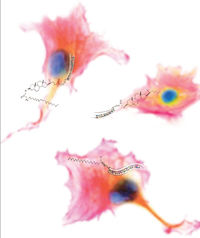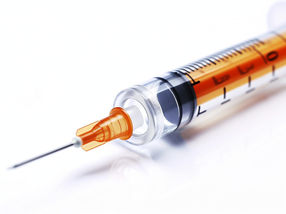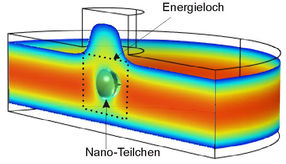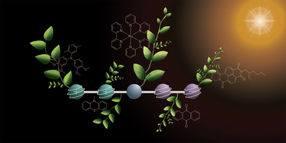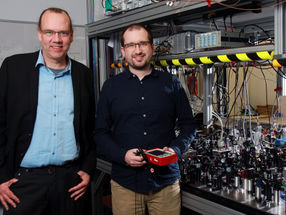Nanobiotech: Exploring New Frontiers in Medicine and Biotechnology
Advertisement
Nanotechnolgy and biotechnology/medicine are interacting in a number of surprising and inventive ways to create an exciting new discipline - nanobiotechnology. From earlier, simpler disease detection, improved imaging, and rapid assessment of potential drug candidates to optimal drug delivery, nanobiotech is brimming with exhilarating possibilities.
"Besides facilitating detection of minutest traces of diseases such as cancer - or perhaps detecting a single spore of pathogen - nanostructured materials and nanodevices could provide better diagnosis of complex diseases and enable unprecedented drug delivery," says Technical Insight Analyst, Girish Solanki.
He adds, "with a new generation of nanochips we could obtain much more accurate medical diagnosis; quickly and efficiently screen the mind boggling array of drug candidates and perform targeted delivery of drugs and vaccines like never before."
Forecasts suggest that nano-enabled services could potentially represent up to $180 billion annually in medicine and healthcare by 2015. Investments in a few biomedical nanotechnology firms appear to mirror the upbeat sentiment: at $10 million or more each, these exceed those for firms in many other nanotechnology sectors.
There has been significant progress in other areas too: novel nanostructured materials that serve as templates for tissue replacement and enable better treatment of burns and bone replacement have been developed. While this has certainly reduced the incidence of burn related fatalities, researchers are still in the early stages of their attempt to induce bone tissue growth through polymer templates.
In terms of drug delivery, developments in nanoencapsulation offer the promise of enhanced delivery and absorption. Here, the relatively inert nanocapsule adheres to and releases the drug solely at the target tissue site, thereby obviating toxicity concerns. Immune reactions associated with the use of modified viruses as the vector of gene-delivery, have trained the spotlight on carbon nanotubes, which now being contemplated as a system for drug delivery in gene therapy.
Additionally, researchers are contemplating the possibility of using magnetic nanoparticles containing drugs to be delivered to specific parts of the body by means of a magnetic field. This is likely to boost therapeutic benefit while minimising side effects on other parts of the body.
Similarly, there have been encouraging advancements in microfluidics, which enable modification of drug levels within the body in real time, thereby avoiding fluctuations in drug concentration. Electrospun fibre bandages that provide an attractive alternative to traditional gauze and elastic bandages are also being researched. These new bandages, created out of flannel-like material, staunch bleeding instantly and can be left in situ since they are absorbed by the body.
Nanotech is also likely to enhance biomolecular-imaging applications. On the one hand, researchers are focusing on ways to use AFM on organic materials so as to minimally impact the organic material as well as swiftly and accurately scan the materials in vivo. On the other hand, non-invasive imaging technologies such as diffusion tensor magnetic resonance imaging (DT-MRI) are likely to allow doctors to better detect development, degeneration, disease and ageing in soft tissue based on the generation of detailed images of the soft tissue's structure.
In addition to nanosensors being used to detect DNA sequences in the body, implanted nanosensors could enable simpler and more effective diagnosis. For instance, implanted devices could dispatch a signal to a pump to release more insulin for diabetes patients. Similar devices could be extended, over time, to deliver a wider range of medication.
Also, quantum dots, which have an ability to bond chemically to biological molecules and emit bright, fluorescent light, could be particularly effective early carcinoma-detection agents. "As a promising barcoding technology that can encode genes and proteins, quantum dots could potentially be employed to enhance the sensitivity of diagnostic tests for molecules that are hard to detect, such as those in cancer cells, or even the AIDS or hepatitis viruses," explains Mr. Solanki.
Signs are now emerging that frenetic R&D activity in nanobiotech could lead to real devices that will edge out unwieldy lab-based procedures with economical, accurate microchips in the near term.
Other news from the department business & finance
Most read news
More news from our other portals
See the theme worlds for related content
Topic world Gene therapy
Genetic diseases once considered untreatable are now at the center of innovative therapeutic approaches. Research and development of gene therapies in biotech and pharma aim to directly correct or replace defective or missing genes to combat disease at the molecular level. This revolutionary approach promises not only to treat symptoms, but to eliminate the cause of the disease itself.

Topic world Gene therapy
Genetic diseases once considered untreatable are now at the center of innovative therapeutic approaches. Research and development of gene therapies in biotech and pharma aim to directly correct or replace defective or missing genes to combat disease at the molecular level. This revolutionary approach promises not only to treat symptoms, but to eliminate the cause of the disease itself.



